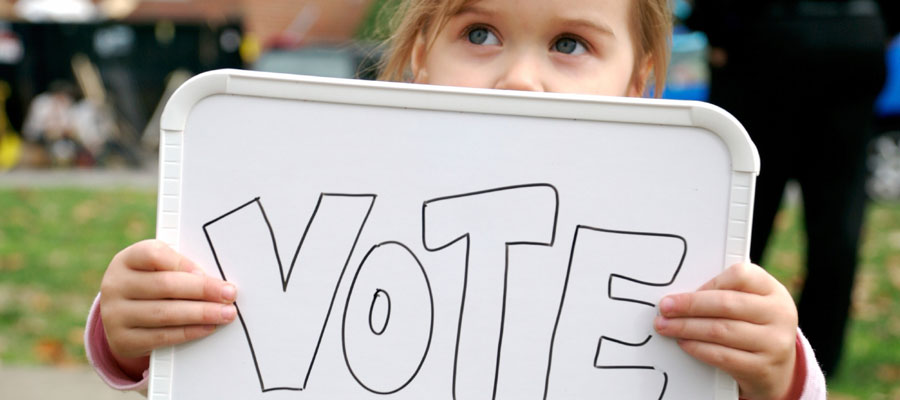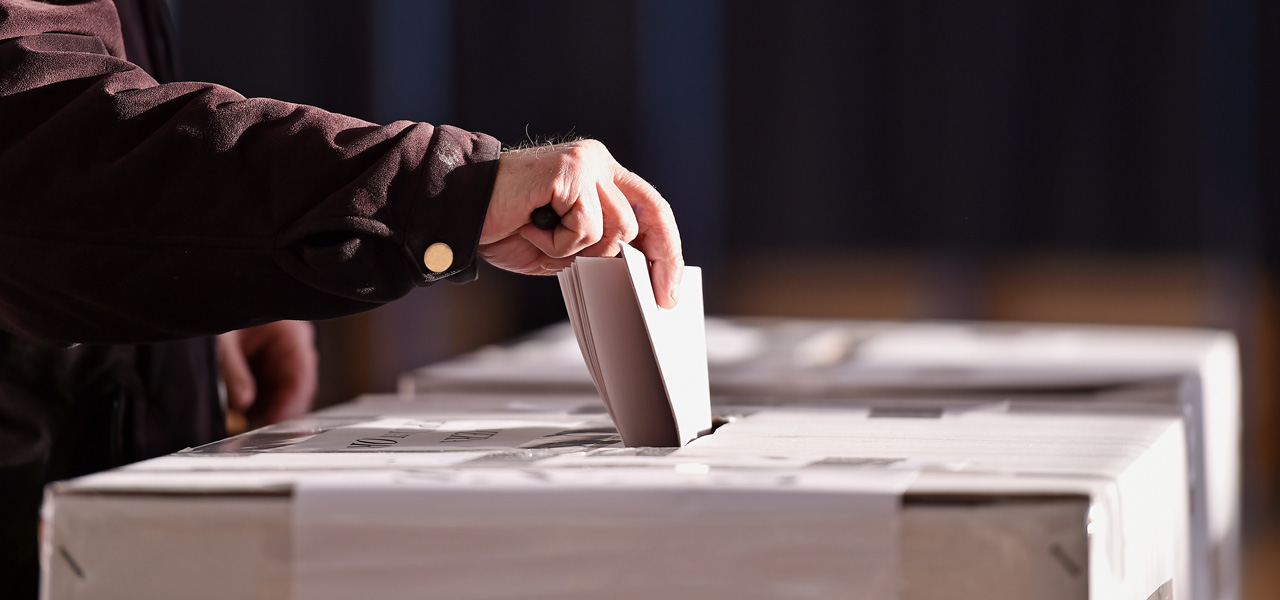How Proportional Representation could help to decentralize power and strengthen Parliament

Submission to the House of Commons Special Committee on Electoral Reform
The debate around electoral reform has largely neglected a central question: what would a change in the electoral system mean for Canada’s constitutional separation of powers? To state the matter briefly, our Westminster system has an inherent tendency toward the concentration of power (into the Prime Minister’s Office) as a result of the partial fusion, in practice, of legislative and executive functions. The “First Past The Post” (FPTP) electoral system exaggerates legislative majorities, creating what distinguished political scientist Peter Russell (2008) calls “false majority governments,” thereby making it easier for the Cabinet, and the office of the Prime Minister, to wield unbalanced executive power.
The adoption of a more proportional electoral system could lead to more negotiation among parties in Parliament and bring more voices into government.
Although it is often said that there is no separation of powers in the Westminster system, the claim is overstated. It is more accurate to say that the legislative and executive branches of government are not separately elected (see Cameron 2013: 173-177). The separate election of the executive and legislature in presidential systems gives rise to checks and balances. Such checks and balances are weaker in a parliamentary system (but they are by no means absent, if we consider the proliferation of independent officers of Parliament). The defining feature of the Westminster system is parliamentary supremacy, which means that the executive is selected by and nested within the Parliament. Hence, the crucial importance of the confidence convention: only the leader of a party that commands the confidence of the House of Commons can exercise executive power. To achieve that position requires control over backbenchers and, if no party alone commands a majority of seats, the confidence of the opposition.
The need to secure the confidence of the House creates a powerful incentive to impose party discipline, which has important advantages—but it can also be abused. If party leaders insist that even routine votes on ordinary legislation are matters of confidence, MPs can be made to act like pawns of the executive. This problem does not arise in a presidential system, where the tenure in office of members of congress is decoupled from the fate of the president (because they are separately elected for fixed terms). Party discipline displaces deliberation from Parliament to the Prime Minister’s Office (PMO) and its staff. It turns Parliament into a glorified electoral college and showcase for partisan competition. At the same time, the media focus on leaders and question period theatrics exacerbates the personalization of politics, leaving much of the work of Parliament invisible. The parties themselves become public relations vehicles for candidates. Once elected, MPs have few opportunities to vote their conscience or initiate legislation and debate. The desire to win a Cabinet post reinforces party discipline and further empowers leaders.
The need to secure the confidence of the House creates a powerful incentive to impose party discipline, which has important advantages—but it can also be abused.
It is highly unlikely, of course, that a change in the electoral system would produce, overnight, such a major transformation. The electoral system is just one of many aspects of the design of our institutions. There are other forces at work fostering “winner-take-all” competition and the concentration of political power. By the same token, it is highly unlikely that a change in the electoral system would produce a sudden erosion of the more desirable features of our current system. A reasonable approach to extrapolating the likely effects of changing one component of the political system is by thinking about how it interacts with the system as a whole.
With respect to the preservation of the separation of powers, electoral reform would appear to be quite advantageous. The separation of powers involves functional differentiation: the legislature makes laws; the judiciary interprets and applies the law in concrete cases; and the executive commands the administrative apparatus of government. By restoring legislative initiative and deliberation to the legislature, PR would help clarify the role of parliamentarians and reinforce their accountability function. Alison Loat (2011: 23-29; also Loat and MacMillan 2014) found that parliamentarians had trouble explaining their job description and rarely mentioned legislating as an essential function. The separation of powers would be reinforced by making the legislative process less opaque and ensuring that more publicity is brought to bear on the bargaining over policy decisions within government (something rarely seen in Westminster systems). Threats to the independence of the judiciary arising from the concentrated power in the PMO would also be diminished.
By restoring legislative initiative and deliberation to the legislature, Proportional Representation would help clarify the role of parliamentarians and reinforce their accountability function.
The initial reaction of many political scientists to the promise to make 2015 the “last election under FPTP” was open skepticism (Puri 2015). The reason was obvious: the Liberal government won a majority under FPTP, and there are few precedents for governments changing electoral rules that favour them. Had the Liberal Party won a minority government in which the NDP and/or the Greens held the balance of power, there would have been a more obvious logic to electoral reform. Changing the electoral system would have bought considerable goodwill from the NDP and the Greens, and might have induced them to provide supply and confidence. This is one of the reasons why I made the case for the benefits of minority government prior to the last election (Cameron 2015).
The skepticism of political scientists was compounded when the government appeared ready to strike a committee in which they would enjoy an absolute majority. This not only seemed somewhat hypocritical, given that the Committee would reflect the very disproportionality it sought to address, but, more importantly, it suggested that decision-making power would be reserved for the Liberal government. The subsequent decision, however, to allocate membership on the electoral reform Committee in proportion to the popular vote rather than the distribution of seats in the House was an important step toward winning confidence among other parties and the public. It indicated that the government was genuinely interested in seeking reforms that could command broad support. In effect, the Liberal government was acting as if the electoral system was already more proportional and sought the cooperation of the opposition parties. It anticipated the way that Parliament could work under PR. The cooperation among parties on the all-party Committee opened space for public engagement and participation. Through its hearings, town hall meetings, and consultations, the reform process offered a glimpse into what a more deliberative Parliament might look like.
The cooperation among parties on the all-party Committee opened space for public engagement and participation. Through its hearings, town hall meetings, and consultations, the reform process offered a glimpse into what a more deliberative Parliament might look like.
Electoral reform is not just about how we vote; it is about how we are governed. In a brilliant book, entitled Democratizing the Constitution: Reforming Responsible Government in Canada, Peter Aucoin, Mark D. Jarvis and Lori Turnbull (2011: 1) make the following assertion: “The Canadian system of parliamentary government faces a fundamental problem that has been allowed to undermine Canadian democracy. The Prime Minister wields too much power over the operations of the House of Commons.” In this pithy diagnosis, the authors are making a claim about the erosion of the separation of powers. The erosion of the separation of powers has been understood, since Montesquieu’s day, to lead to the abuse of power. Nobody is more directly affected than members of Parliament who lose the opportunity to “perform their basic parliamentary responsibilities properly” (Aucoin, Jarvis, and Turnbull 2011: 4), and that is one good reason why the solution should come from Parliament itself: members of Parliament are directly affected by the decline of the House of Commons in relation to the PMO. Aucoin, Jarvis, and Turnbull certainly do not attribute the erosion of Canadian democracy to the electoral system, but they do note that under certain circumstances the FPTP system can undermine the democratic legitimacy of electoral outcomes, especially when a minority of voters elects a majority government—that is, when it creates “false majority governments” (Aucoin, Jarvis, and Turnbull 2011: 160-163).
The solution should come from Parliament itself: Members of Parliament are directly affected by the decline of the House of Commons in relation to the PMO.
CCPA research assoc. @MaxwellACameron shows how Proportional Representation could revitalize Cdn democracy: https://t.co/86nqUb6p9K #cdnpoli
— The CCPA–BC (@CCPA_BC) September 28, 2016
Notes
Asselin, Robert. “An Agenda for Democratic Reform in Canada,” 2014.
Aucoin, Peter, Mark D. Jarvis and Lori Turnbull. (2011). Democratizing the Constitution: Reforming Responsible Government. Toronto: Emond Montgomery Publications.
Cameron, Maxwell A., Megan Dias, Spencer McKay, David Moscrop, Electoral Reform Discussion Paper. Vancouver, Centre for the Study of Democratic Institutions, The University of British Columbia. May 23, 2016.
Cameron, Maxwell. Trust and Confidence: Post-Election Cooperation in Parliament. Centre for the Study of Democratic Institutions, October 2015. Retrieved from http://www.democracy.arts.ubc.ca/2015/10/06/post-election-cooperation/
Cameron, Mawell A. Strong Constitutions: Social-Cognitive Origins of the Separation of Powers, New York: Oxford University Press, 2013.
Carmichael, Kelly, “Trudeau must turf first-past-the-post system once and for all,” National Observer, December 23, 2015. http://www.nationalobserver.com/2015/12/23/opinion/trudeau-must-turf-first-past-post-system-once-and-all
Dawood, Yasmin, “Is a constitutional amendment required for electoral reform?” Policy Options. June 27, 2016. http://policyoptions.irpp.org/magazines/june-2016/is-a-constitutional-amendment-required-for-electoral-reform/
Dias, Megan, Spencer McKay, and David Moscrop. “Electoral Reform in Canada,” Rapporteur’s Report on Roundtable on Electoral Reform, June 27, 2016. Vancouver, Centre for the Study of Democratic Institutions, The University of British Columbia. August 31, 2016.
Law Commission of Canada. (2004). Voting counts: Electoral reform for Canada. Government of Canada. Retrieved from http://publications.gc.ca/collections/Collection/J31-61-2004E.pdf
Lijphart, Arend. Patterns of Democracy (second edition). Yale University Press, 2012.
Loat, Alison, “Member of Parliament: A Job With No Job Description,” Canadian Parliamentary Review, Spring 2011, pp. 23-29.
Loat, Alison and Michael MacMillan. Tragedy in the Commons. Toronto: Random House, 2014.
Moscrop, David. “An electoral system for all,” Broadbent Institute, 2016.
Puri, Belle. 2015. October 21. “Trudeau unlikely to change voting system say political scientists,” CBC News. http://www.cbc.ca/news/canada/british-columbia/trudeau-proportional-representation-voting-system-1.3280995
Russell, Peter H. Two Cheers for Minority Government: The evolution of Canadian parliamentary democracy. Emond Montgomery Publications Limited, 2008.
Stepan, Alfred and Cindy Skach, “Constitutional Frameworks and Democratic Consolidation: Parliamentarism versus Presidentialism,” World Politics, Vol. 46, October 1993, pp. 1-22.
Topics: Democracy


